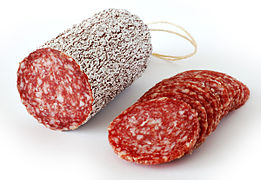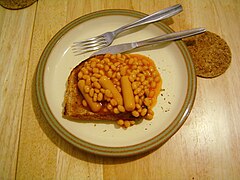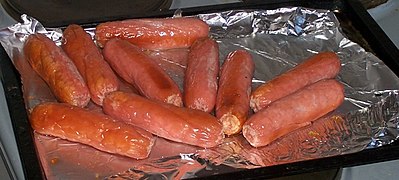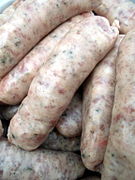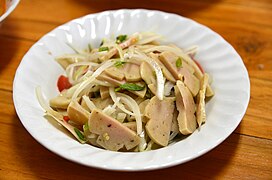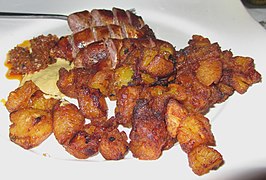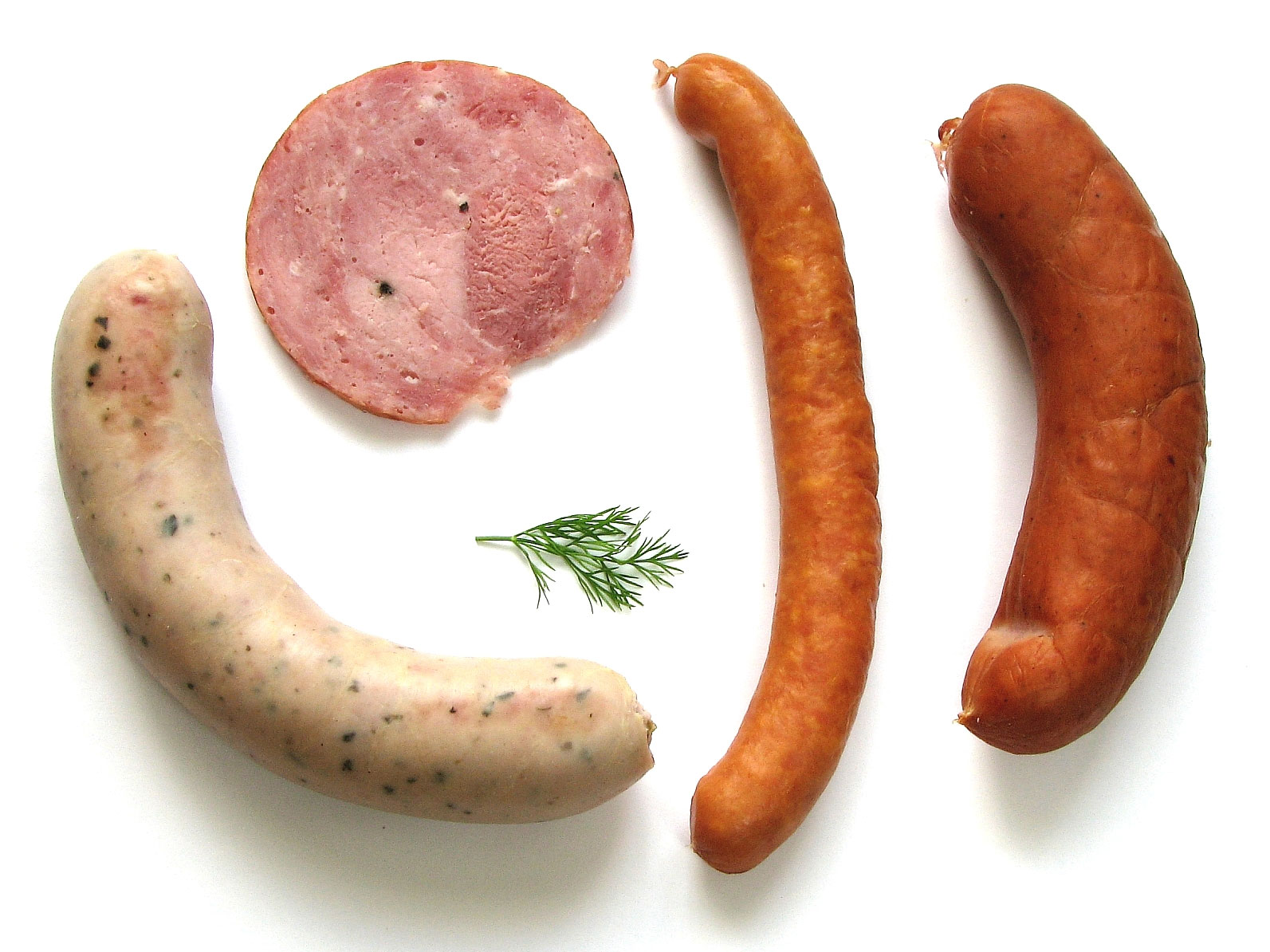
Sausage
A sausage is a type of meat product usually made from ground meat—often pork, beef, or poultry—along with salt, spices and other flavourings. Other ingredients, such as grains or breadcrumbs, may be included as fillers or extenders.
This article is about the food. For other uses, see Sausage (disambiguation).
When used as an uncountable noun, the word sausage can refer to the loose sausage meat, which can be formed into patties or stuffed into a skin. When referred to as "a sausage", the product is usually cylindrical and encased in a skin.
Typically, a sausage is formed in a casing traditionally made from intestine, but sometimes from synthetic materials. Sausages that are sold raw are cooked in many ways, including pan-frying, broiling and barbecuing. Some sausages are cooked during processing, and the casing may then be removed.
Sausage-making is a traditional food preservation technique. Sausages may be preserved by curing, drying (often in association with fermentation or culturing, which can contribute to preservation), smoking, or freezing. Some cured or smoked sausages can be stored without refrigeration. Most fresh sausages must be refrigerated or frozen until they are cooked.
Sausages are made in a wide range of national and regional varieties, which differ by the types of meats that are used, the flavouring or spicing ingredients (e.g., garlic, peppers, wine, etc.), and the manner of preparation. In the 21st century, vegetarian and vegan varieties of sausage in which plant-based ingredients are used instead of meat have become much more widely available and consumed.
Ingredients
A sausage consists of meat cut into pieces or ground, mixed with other ingredients, and filled into a casing. Ingredients may include a cheap starch filler such as breadcrumbs or grains, seasoning and flavourings such as spices, and sometimes others such as apple and leek.[8] The meat may be from any animal but is often pork, beef or veal, or poultry. The lean meat-to-fat ratio depends upon the style and producer. The meat content as labelled may exceed 100%, which happens when the weight of meat exceeds the total weight of the sausage after it has been made, sometimes including a drying process which reduces water content.
In some jurisdictions foods described as sausages must meet regulations governing their content. For example, in the United States The Department of Agriculture specifies that the fat content of different defined types of sausage may not exceed 30%, 35% or 50% by weight; some sausages may contain binders or extenders.[9][10]
Many traditional styles of sausage from Asia and mainland Europe use no bread-based filler and include only meat (lean meat and fat) and flavorings.[11] In the United Kingdom and other countries with English cuisine traditions, many sausages contain a significant proportion of bread and starch-based fillers, which may comprise 30% of ingredients. The filler in many sausages helps them to keep their shape as they are cooked. As the meat contracts in the heat, the filler expands and absorbs moisture and fat from the meat.[12]
When the food processing industry produces sausages for a low price point, almost any part of the animal can end up in sausages, varying from cheap, fatty specimens stuffed with meat blasted off the carcasses (mechanically recovered meat, MRM) and rusk. On the other hand, the finest quality contain only choice cuts of meat and seasoning.[8] In Britain, "meat" declared on labels could in the past include fat, connective tissue, and MRM. These ingredients may still be used but must be labelled as such, and up to 10% water may be included without being labelled.[12]
Similar food
